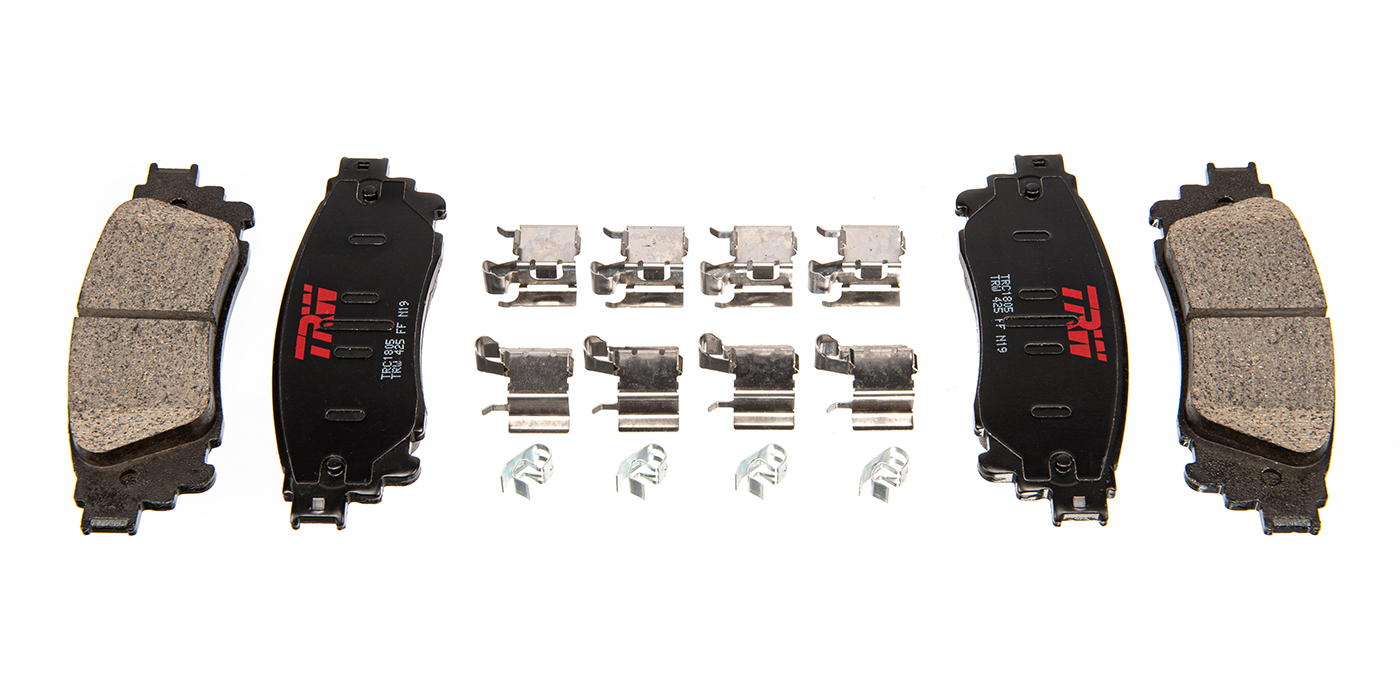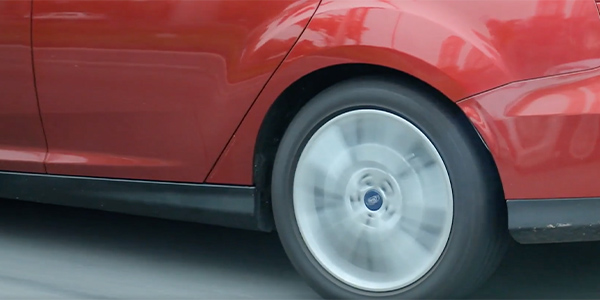Restore Brake System Integrity For Better Performance
And Safer Driving
The rate at which the brake linings wear out depends on the frequency of use, how hard the brakes are being applied, the temperature of the linings and the wear characteristics of the friction material itself. Consequently, a set of brake linings on one vehicle might last only 25,000 to 30,000 miles, when on a different vehicle they might go 50,000 or 60,000 miles.
As a rule, most brake pads and shoes should be replaced when the thickness of the friction material is worn down to minimum specifications (typically less than 1/8” of lining thickness) or when the surface of the pads or shoes is worn down flush with the tops of the rivet heads (riveted linings). Some brake pads have built-in wear indicators that generate a metallic scraping noise when the pads are worn out and need to be replaced.
SELLING THE BRAKE JOB
So, the linings are worn and need to be replaced. Now what? Brake linings and other parts that are obviously worn out, broken or leaking should always be replaced. But what about parts that are marginal or appear to be OK? For example, should calipers or wheel cylinders always be rebuilt or replaced if they’re not leaking, or should you leave them alone? What about replacing the master cylinder in a high-mileage vehicle? Should you always flush the brake system and refill it with fresh fluid?
Some people might think you’re trying to rip them off if you recommend replacing parts that are still working, but are near the end of their service life. This is a hot button issue with consumer advocates and government regulators because they may see it as an attempt to sell unnecessary parts and services. In some states (California), there are strict regulations covering the replacement of brake components. The rules say when you can and cannot replace brake system components based on wear or condition.
A less draconian approach has been taken by the Motorist Assurance Program (MAP) to help technicians, service advisors and shop owners do a better job of selling brake repairs. MAP’s voluntary repair guidelines cover the brake inspection process and tell you when brake repairs are truly necessary, or when brake repairs can be recommended to improve braking performance or to restore the brakes to “like-new” condition.
Many times, the person doing the brake inspection has to make a judgment call as to whether or not something should be replaced. Take brake linings, for example. Should the linings be replaced only when they’re at or below minimum thickness (as defined by the vehicle manufacturer), or is it OK to replace them if they’re still above minimum thickness, but are getting thin? This is a call that many technicians have to make when doing a brake job. Though it might not be absolutely necessary to replace the rear linings at that moment, doing so could save the customer the cost and inconvenience of having to replace them later. The best answer in this situation would be to discuss the situation with the customer and let him/her make the final call.
WEAR ISSUES
One of the major issues with selling customers a “complete” brake job is that the components in the brake system do not wear at the same rate. The front brakes typically wear two to three times faster than the rear brakes. Consequently, it may not be necessary to replace the rear linings until the second or third set of front pads have been replaced.
Many technicians recommend rebuilding or replacing calipers and wheel cylinders as part of a complete brake job — and with good reason. Over time, rubber seals on caliper and wheel cylinder pistons harden and lose elasticity. This may cause the seal to leak. Corrosion inside the piston bore can also accelerate seal wear. Pushing the caliper pistons back in their bores also causes the seals to rub against an area on the piston that may have become corroded and rough, which can also accelerate seal wear.
So even if the caliper or wheel cylinder is not leaking when you replace the linings, eventually it will leak. Since there’s no way to know how long it will be before the brakes are serviced again, many technicians think that rebuilding or replacing these parts to restore the system to like-new condition reduces the risk of brake-related problems down the road — and they’re right.
The point here is components in the brake system wear at different rates, which cannot be predicted by time or mileage alone. That’s why a thorough inspection of the entire brake system is so important any time brake work is needed, or any time the brakes are experiencing a problem (noise, pulling, dragging, soft pedal, etc.).
THE COMPLETE JOB
The brakes are the most important safety system on a vehicle, so a complete brake job should cover every aspect of the system. It should start with a thorough visual inspection of the entire brake system to determine the condition of all its major components, enabling you to recommend any repairs that are necessary to restore the brakes to proper operating condition for safe driving.
This includes measuring lining thickness front and rear (which will require pulling both rear drums), assessing the condition of the lines, hoses, calipers and wheel cylinders, the appearance and condition of the brake fluid, checking pedal feel and travel, and the brake and ABS warning lights (lights should come on then go out when the ignition is turned on). Only after the inspection has been completed should any repair recommendations be made.
The ABS system is often overlooked when doing brake work on late-model cars. If the ABS warning light is on, there is a fault that needs to be investigated. This will require plugging a scan tool into the vehicle’s diagnostic connector to read out the diagnostic trouble code(s). If the light is out (and is not burned out), it’s usually safe to assume the ABS system is functioning properly — unless the vehicle has been experiencing any unusual brake problems or the ABS system has been kicking in unnecessarily when braking normally on dry pavement. There may be an issue that will require additional diagnosis.
A test drive is an excellent way to evaluate overall brake performance. But, unfortunately, many techs don’t have the time to test drive every vehicle they work on. Because of this, problems may be overlooked that may cause a comeback later.
WHEN REPAIRS ARE NECESSARY
Once the entire brake system has been inspected, a recommendation to the vehicle’s owner can be made as to what parts needs to be replaced. In most instances, a “complete” brake job will include the following:
New linings, front and rear.
Resurfacing both rotors and drums (or replacing them if worn, cracked or hard spots are found).
Replacing drum hardware and caliper bushings/pins/sleeves.
Rebuilding or replacing calipers and wheel cylinders (depending on mileage and condition).
Possibly replacing some brake hoses and/or the master cylinder (if leaks or problems are found).
Test the brake fluid and, if necessary, flush the brake fluid and bleed all the lines.
Inspecting wheel bearings (repacking on older vehicles).
Lubricating all critical areas such as caliper slides and shoe pads with high-temperature brake lubricant.
Checking and adjusting the parking brake.
Checking the ABS system for any fault codes, or replacing any faulty ABS components as needed (wheel speed sensors, hydraulic modulator, accumulator, pump or relay).












